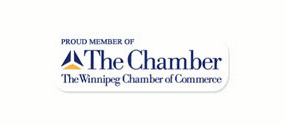Building and Tracking Your Spending Plan
The key to money management is simple, develop the plan and track the progress. If you do this we guarantee that you will be in a far better place financially after just three months than where you are today. You will clearly understand where your money is going and what you need to adjust to make sure you are not spending more than you are bringing in.
A budget can be as simple or complicated as you want to make it. So here are the basics that we recommend.
Step 1: Get a Transaction Register from your financial institution or use an electronic version. Write down all money coming in and all money going out in this register. Don't forget to write down the pre-authorized debits each month that are automatically coming out of your account.
Step 2: Monthly Budget Form. In the Budget column prepare your draft budget. This is going to be your best guess at what you are spending each month for each category. You will adjust this later so don't worry about being too precise.
Step 3: Irregular Expenses On this form think about things you spend money on annually. An example is birthdays for two children. Let's say you spend $300 on each child. You would record an "annual expense" of $600 ($300 x 2 children). The monthly savings will calculate for you and it should show $50.00. This is the amount you need to put away each month so that you have the money when the birthdays come. Use this same concept for all the annual expenses you can think of. The total "Monthly Savings" will be the amount that you will record on Monthly Budget Form on the last expense item called "Irregular Expenses".
Step 4: Payroll Planner. The payroll planner will help you spread out the expenses so that you can figure out what you want to pay with each pay cheque. There is enough room on this form to include two people's pay cheques. Use Monthly Budget to help guide you as these are the same numbers that you will use, but you will break down the expenditures in a little more detail. Let's use Food for example. Let's say you recorded a food cost of $1000 per month. The easiest way to look at this is to say that you will spend $500 from one pay cheque and $500 from the second pay cheque on food. If you are a couple and one person is covering food than you can figure out who will be paying the utilities bills and from which pay cheque. This step will take a little more figuring out but once you have it nailed down it will help keep you out of that expensive bank overdraft.
Step 5: Keep the receipts for everything you spend. At the end of the month or weekly if you prefer add up all the expense for each category. An example would be to add up all the food receipts and enter them on Monthly Budget Form in the column called (Month). You can rename the months as required. Once you have gone through two months I suggest that you adjust your Monthly Budget to reflect the actual expenditures that you have been recording.
Step 6: Make sure that you are moving your "Irregular Expense" into a savings account each month. It is very important that you remove these funds from your chequing account. You might want to take a look at Tangerine Bank of Canada where you can nick name the savings account to match the Irregular Account names you are putting money aside for.
These 6 steps will give you a very clear picture of where your hard earned money is going and allow you to make the required changes to meet all your financial life goals.






